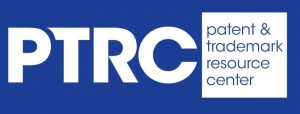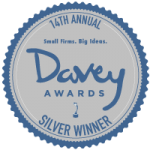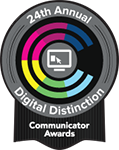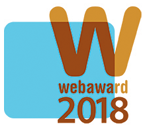Patent and trademarks

Patent and Trademark Events
Types of intellectual property (IP) rights
- IP Identifier – Use the USPTO’s IP identifier tool to find out what types of IP rights you need to protect.
-
- Go to Patent Guide
- Go to Trademark Guide
- Go to Copyright Guide
- Go to Local Resources Guide
Hawaii State Library PTRC Services
Hawaii State Library has been a Patent and Trademark Resource Center (PTRC) since December 18, 1989. The Hawaii State Library PTRC is housed in the Federal Document Section on the 2nd floor of the library.
PTRCs are libraries designated by the U.S. Patent and Trademark Office (USPTO) to provide the public free access to patent and trademark information resources and services made available by the USPTO.
Have a great idea for an invention or product? Need to find out how to protect your intellectual property? We can help you! Our staff can connect you with the resources and tools you need and assist you in using them. Our PTRC services are available through walk-in, phone call at (808) 586-3477, and on our online Ask a librarian.
Walk-in & Telephone Hours:
| Day of the Week (except holidays) | Hours |
| Monday, Tuesday, Wednesday, & Saturday | 9:00 am-4:00 pm |
| Thursday | 9:00 am-7:00 pm |
| Friday | 11:00 am-4:00 pm |
| Sunday | Closed |
Our PTRC Resources & Services
- Collection of full-color print and microfiche plant patents
- One computer dedicated to patent and trademark searching
- Access to online patent and trademark databases
- Training on preliminary patent search
- Intellectual property seminars on patents, trademarks, copyright and entrepreneurship topics
Patent Guide
A patent is an intellectual property right granted to inventors by a country’s government for a limited period to exclude others from making, using, offering for sale, selling or importing the invention.
There are three main types of patents – utility, design, and plant. A utility patent is granted for a new and useful process, machine, article of manufacture, or composition of matters, or any new useful improvement thereof. A design patent is granted for a new, original, and ornamental design for an article of manufacture. A plant patent is granted for new, asexually reproduced plant varieties.
Patent Law and Overviews
- U.S. Patent and Trademark Office (USPTO) – The USPTO home page.
- Patent Basics – USPTO’s guide on patents, covering essential patent information, application procedures, patent management, and resources for inventor assistance.
- USPTO Videos – USPTO’s public education videos on intellectual property topics.
- Manual of Patent Examining Procedure (MPEP) – This Manual for USPTO patent examiners is a helpful reference guide for attorneys and agents as well as for applicants. Appendix L contains all the text of the Title 35 of the United States Code, which is the U.S. patent statute.
- PCT FAQs: Protecting Your Inventions Abroad: Frequently Asked Questions About the Patent Cooperation Treaty (PCT) – The World Intellectual Property Organization (WIPO)’s FAQs on how to protect an invention internationally.
- Scam Prevention – Any notice from the USPTO has the zip code, 22313-1450. Any email from the USPTO has the domain, @uspto.gov. Contact USPTO if you receive any notice asking for payment to an address that is not the USPTO’s. See the complaints filed against invention promotion firms and scammers.
- PTRC Basic Resources – A list of resources available at Patent and Trademark Resource Centers.
Patent Search
To be patentable, the invention must be statutory, novel, useful, and nonobvious. A thorough patent search helps assess the novelty and non-obviousness of your invention and allows you to make a more informed decision on whether to pursue your patent application or not. It also helps you to discover which companies might be interested in licensing your invention.
- Patent Public Search – The new more robust patent search tool launched on February 1, 2022 for full-text searching of all U.S. patents and published patent applications.
- Search for Patents – USPTO’s patent search guide, featuring a 38-minute tutorial on conducting a preliminary U.S. patent search, databases for patent searching and additional resources.
- Multi-Step U.S. Patent Search Strategy – A step-by-step guide for conducting a preliminary patent search.
- Patent Classification – The page to access the Cooperative Patent Classification (CPC) System and the U. S. Patent Classification (USPC) System. You can browse or search them by classification symbol or keyword.
- X-Patents (July 31, 1790-July 2, 1836) – Before 1836, patents were unnumbered. About 9,957 patents were issued between 1790 and 1836. A fire at the USPTO in 1836 destroyed these unnumbered patents. Some of them were reconstructed based on the inventors’ records, reference books, and the patent examiner’s memory, and the letter X was added to each serial number. These X-patents are now available in the USPTO’s Patent Public Search tool. A patent number search with a truncation operator, e.g., “X*” or “X$” will retrieve the list of X-patents.
- Index of Patents – HathiTrust Digital Library contains the collection of the historical patent indexes – Annual Report of the Commissioner of Patents (1842-1921) and Index of Patents Issued from the United States Patent Office (1920-1974). The List of Patentees part is an alphabetical name index of inventors and the Index to Subjects and Inventions part is a class number index.
- Patent Official Gazette (JUL 2, 2002 – present) – Contains the front page, a claim, and a drawing (if applicable) of each patent grant issued that week. Earlier versions since 1822 can be found on HathiTrust. Through 1971 the Official Gazette of the United States Patent and Trademark Office included both patent and trademark registrations. Effective February 2, 1971, the Official Gazette was separated into two parts, the Patent Official Gazette and the Trademark Official Gazette.
- Espacenet – The European Patent Office’s worldwide patent database.
- Google Patents – Searches the granted patents as well as the published patent applications from the USPTO and EPO with an option to include non-patent literature. Clicking on the Prior Art Finder button at the top of any individual patent document also retrieves non-patent prior art documents from the web, Google Scholar and Google Books.
- Lens.org – Free database from Australian non-profit organization Cambia. Searches EPO, US, WIPO PCT and Australian patent documents.
- PatentScope – The WIPO’s patent database.
Patent Application Filing
- Patent Center – The USPTO’s new, unified interface for filing ,reviewing, and managing patent applications.
- Forms For Patent Applications Filed On Or After September 16, 2012 – A list of USPTO forms related to patent filing.
- Nonprovisional (Utility) Patent Application Filing Guide – The USPTO’s guide for filing a utility patent application.
- Design Patent Application Guide – The USPTO’s guide for filing a design patent application.
- General Information About 35 U.S.C. 161 Plant Patents – The USPTO’s guide for filing a plant patent application.
- Provisional Application for Patent – The USPTO’s guide for a provisional application. NOTE: A provisional application never automatically matures into an issued patent. It is an optional step to establish an earlier filing date for the nonprovisional utility or plant application that must be filed within 12 months of the provisional application.
- Contact Patents – The USPTO’s contact information for questions about e-filing, examination policy or filling out the forms.
- Finding a Patent Practitioner – The USPTO’s directory of patent attorneys and agents who are eligible to practice before the USPTO.
- Patent Pro Bono Program for Independent Inventors and Small Businesses – The pro-bono program offers free legal services to financially under-resourced independent inventors and small businesses.
- Pro Se Assistance Program – Provides assistance via phone or WebEx to the pro se applicants. NOTE: The USPTO employees cannot give legal advice.
Books on Patent
- ABA Consumer Guide to Obtaining a Patent: a Practical Resource for Helping Entrepreneurs & Innovators Protect Their Ideas by Rich Goldstein (346.0486 Go)
- Essentials of Patent Claim Drafting by Morgan D. Rosenberg (R 346.0486 Ro)
- Faber on Mechanics of Patent Claim Drafting by Robert C. Fabe (R 346.0486 Fa)
- From Edison to iPod: Protect Your Ideas and Profit by Frederick Mostert and Lawrence E. Apolzon (346.048 Mo)
- How to Make Patent Drawings: a Patent It Yourself Companion by Jack Lo and David Pressman (608.022 Lo)
- The Inventor’s Bible: How to Market and License Your Brilliant Ideas By Ronald Louis Docie (658.8 Da 2015)
- Intellectual Property and Information Rights for Librarians by John Schlipp (R 364.048 Sc)
- Nolo’s Patents for Beginners by David Pressman and Richard Stim (346.0486 Pr)
- Nondisclosure Agreements: Protecting Your Trade Secrets and More by Richard Stim and Stephen Fishman (346.048 St)
- Patent, Copyright and Trademark: an Intellectual Property Desk Reference by Richard Stim (346.048 St)
- Patent it yourself: Your Step-by-Step Guide to Filing at the U.S. Patent Office by David Pressman (346.0486 Pr)
- Patent Pending in 24 Hours by Richard Stim and David Pressman (346.0486 St)
- Patent Searching Made Easy: How to Do Patent Searches Online and in the Library by David Hitchcock (608 Hi)
Patent Fees
- USPTO Fee Schedule – A list of the USPTO fees.
- USPTO Maintenance Fees – The USPTO’s patent maintenance fees information including instructions on when and how to pay.
Trademark Guide
A trademark is any word, name, symbol or design, or any combination of these, used in commerce to identify and distinguish the goods or services of one manufacturer or seller from those of another.
There are four main categories of trademarks – fanciful or arbitrary, suggestive, descriptive, or generic. The category your mark falls into significantly impacts both its registrability and your ability to enforce your exclusive rights in that mark.
Trademark Law, Overviews and How-To Guide
- U.S. Patent and Trademark Office (USPTO) – The USPTO home page.
- Trademark Basics – The USPTO’s information on trademark basics, including what is a trademark, why it is important to protect it, and the federal registration process.
- USPTO Videos: Trademarks – A trademark guide videos list including TEAS Nuts and Bolts series and Trademark Information Network (TMIN) series.
- Trademark Manual of Examining Procedure – This Manual for the USPTO trademark examining attorneys is a helpful reference guide for the attorneys and agents as well as the applicants.
- PTRC Basic Materials and Services – A list of resources available at Patent and Trademark Resource Centers.
- International Classification of Goods and Services for the Purposes of the Registration of Marks (Nice Classification – NCL) – The trademark classification system used in the U.S. and over 80 other countries.
- Trademark Litigation Online Toolkit – Provides answers to the common questions about trademark litigation.
Trademark Search
- Search trademark database – Tips on developing trademark search strategy and navigating mechanics of the USPTO trademark search system along with video tutorials.
- Trademark Search – Newly launched USPTO trademark search system.
- Trademark ID Manual – The list of pre-set descriptions of goods and services and the classes they are assigned to. There are 45 classes, classes 1-34 for goods and classes 35-45 for services. Each class covers a wide range of goods or services, e.g., class 25 covers all clothing and class 36 covers all insurance and financial services.
- USPTO Design Search Code Manual – A searchable list of design codes, numerical identifiers for visual elements in a trademark design. Each code comprises six digits: the first two indicate the category, the next two, the division, and the final two, the section. For instance, the design code for a five-pointed star is 01.01.03. The manual is also accessible through the USPTO trademark search system in Expert mode.
- State Trademark Information Links – A list of links to trademark databases of the 50 states, the District of Columbia and Puerto Rico.
- Global Brand Database – The WIPO’s international trademark database contains the records of registered and pending trademark applications registered under the Madrid System, Appellations of Origin registered under the Lisbon System, and Emblems protected under the Paris Convention 6ter.
- Trademark Official Gazette (2000-) – Every Tuesday the USPTO publishes newly registered trademarks, providing an opportunity to challenge the proposed registration. Earlier versions since 1822 can be found on HathiTrust. Through 1971 the Official Gazette included both patent and trademark registration. Effective February 2, 1971, it was separated into two parts, the Patent Official Gazette and the Trademark Official Gazette.
Trademark Registration
- TEAS – The page to sign into MyUSPTO using your USPTO.gov account and access the Trademark Electronic Application System (TEAS) for US trademark registration or the Trademark Electronic Application System International (TEASi) for international application.
- TSDR – Use the Trademark Status and Document Retrieval (TSDR) system to retrieve status information and documents for pending and registered trademarks. Once a trademark application is filed, the USPTO issues a serial number in the filing receipt. By typing in that serial number into the TSDR system you can check the status of your application, notice of office action from the USPTO and any outstanding deadlines to respond to.
- Trademark Basics Registration Toolkit – An overview of the trademark application and registration process.
- TEAS Nuts and Bolts videos – USPTO’s how-to video series on filling out the TEAS application form.
- Apply Online – USPTO trademark application guide, including instructions on creating and signing into MyUSPTO using your USPTO.gov account and guidance on which forms to use.
- Log in to TEAS and TEASi – Instructions on logging into the Trademark Electronic Application System (TEAS) and TEAS International (TEASi) with two-step authentication and identity verification, along with a step-by-step video tutorial on creating your USPTO.gov account.
Trademark Fees
- Fee Schedule – The USPTO fees list including trademark fees.
- Trademark Fee Information – A detailed trademark fees information including the methods of payment.
Books on Trademark
- The Logo Design Idea Book: Inspiration from 50 Masters by Steven Heller and Gail Anderson (741.6 He)
- Intellectual Property and Information Rights for Librarians by John Schlipp (R 364.048 Sc)
- Logo Design Love: a Guide to Creating Iconic Brand Identities by David Airey (741.6 Ai)
- Patent, Copyright & Trademark: an Intellectual Property Desk Reference by Richard Stim (346.048 St)
- Trademark: Legal Care for your Business & Product Name by Stephen Elias and Richard Stim (346.0488 Fi)
Copyright Guide
Copyright is a form of intellectual property rights, which protects original literary or artistic works upon being fixed in a tangible medium such as poetry, novels, movies, songs, computer software, and architecture.
Copyright Law, Overviews and How-To Guide
- U.S. Copyright Office – The Copyright Office home page.
- Overview of Copyrights – A 43-minute presentation on copyright protection.
- Circulars – The Copyright Office’s publications for a general audience that explain copyright laws and rules in plain language in topical arrangement such as laws, policies, procedures, and categories of works.
- Compendium of U.S. Copyright Office Practices – The Copyright Office’s administrative manual for registrations and recordations is a helpful reference guide for copyright practitioners.
- Copyright Law of the United States (Title 17) – Contains the text of the Title 17 of the United States Code that outlines the U.S. copyright law.
- Frequently Asked Questions – Provides answers to the many questions about copyright law like “How much of someone else’s work can I use without getting permission?”
Copyright Record Search
- Public Catalog of Copyright Records – U.S. Copyright Office’s web-based database containing copyright records from 1978 to the present.
- Catalog of Copyright Entries – Contains digitized copyright records from 1891 to 1977.
- Guide to searching the Copyright Office Catalog – The Copyright Office’s copyright search tutorial.
- How to Investigate the Copyright Status of a Work – Circular 22 providing a guidance on how to investigate whether a work is still under copyright protection and, if so, the facts of the copyright.
- The Copyright Card Catalog and the Online Files of the Copyright Office –Circular 23 describing the repositories of copyright registration information available online and in print, and issues related to searching.
Copyright Registration
- Electronic Copyright Office (eCO) – The page to access the Copyright Office’s online copyright registration system.
- Registration Tutorials – Video tutorials that provide step-by-step instructions for registering various categories of works.
- Registering a Copyright with the U.S. Copyright Office – Includes information on registering online versus mailing in paper forms.
Copyright Fees
- Fees – U.S. Copyright Office – The fees chart for registration, recordation, and other U.S. Copyright Office services.
Books on Copyright
- The Copyright Handbook: What Every Writer Needs to Know by Stephen Fishman (346.0482 Fi)
- Getting Permission: How to License & Clear Copyrighted Materials Online & Off by Richard Stim (346.0482 St)
- Intellectual Property and Information Rights for Librarians by John Schlipp (R 364.048 Sc)
- Patent, Copyright and Trademark: an Intellectual Property Desk Reference by Richard Stim (346.048 St)
- Patry on Fair Use by William F. Patry (R 346.0482 Pa)
- The Public Domain: Find and Use Free Content for Your Website, Book, App, Music, Video, Art, and More by Stephen Fishman (346.0482 Fi)
Local Resources Guide
Local Resources for Entrepreneurs and Inventors
- Hawai’i Small Business Development Center (SBDC) – A national program to provide technical assistance to small businesses offers no-cost business consulting in the areas of access to capital, financial performance management, business plans, acquisitions and commercialization.
- DBEDT Business Development and Support Division – A division of the Department of Business, Economic Development & Tourism that supports existing and emerging industries and small business, and exports of Hawaii products and services.
- Patsy T. Mink Center for Business & Leadership – Funded by the Small Business Administration, the Patsy T. Mink Center for Business & Leadership (MCBL) at YWCA O‘ahu supports the economic and leadership advancement of entrepreneurs and women.
- Veterans Business Outreach Center of the Pacific – A program of the University of Hawaiʻi at Hilo, funded in part by the Small Business Administration, provides entrepreneurial development services such as business training, counseling and mentoring for veterans owning or starting a small business.
- SCORE HawaiI – A volunteer, non-profit organization, dedicated to helping small businesses get off the ground, grow and achieve their goals through education and mentorship.
Disclaimer:
The Hawaii State Library PTRC does not guarantee or assume any liability for the accuracy, currency or completeness of the information presented on this webpage.
The Hawaii State Library PTRC staff are here to provide assistance on how to do your own self-directed preliminary patent and trademark searching. They will assist you in any way possible in the use of patent and trademark search tools. However, they cannot conduct an actual search for you or provide legal advice.





